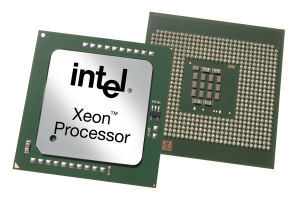AMD launches dual-core MP Opterons; Intel responds with low-voltage Xeons
Sunnyvale (CA) - Having won one market victory with the first introduction of multicore processors for multi-processor platforms - and not wanting anyone to forget it too soon - AMD announced this morning the release of its fourth series of three new Opteron series processors, topped by the Dual-core Model 880 and followed up by the Dual-core Model 280, both of which will be available immediately.
The Opteron 880 is geared toward four- to eight-way (4P - 8P) servers and 4P workstations, while the 280 addresses the 2P server market, and the new Dual-core Model 180 - available in late October - is geared toward single-processor servers. In 1000-unit quantities, the 880 will sell for $2649, with the 280 selling for $1299 and the 180 for $799.
As John Williams, AMD's director for server product planning, told Tom's Hardware Guide, the company's new dual-core price strategy is to equalize entry-level dual-core prices with top-tier single-core. With the entry of three new models, prices of existing dual-core product lines have been reduced to single-core levels. For example, AMD's top-of-the-line two-way single-core Models 252 and 254 are priced equivalently with the reduced prices of its two-way dual-core Models 265 and 270: $690 and $851, respectively. "In the customer's mind," said Williams, "that's a no-brainer... Over time, the migration to dual-core is the logical path."
In results released this morning of SPEC benchmark tests conducted two weeks ago, the new Opteron 880 promises between 5 and 9 percent greater performance than the company's previous top-of-the-line Opteron 875, and in one test, nearly 98 percent greater performance than a 3.33 GHz Intel Xeon MP. In AMD's current Opteron numbering scheme, the first digit refers to number of processors, while the remaining digits refer to relative performance levels, increasing in multiples of five.
AMD's Williams told us, "We determined that frequency was not the correct measure of performance. With architectures like Intel's NetBurst, the gigahertz that they could achieve was not the proper balance to what we could achieve with a much better system architecture at lower gigahertz." As a result, AMD opted to use model numbering to distinguish performance, although there's only three "steps" left for Opteron before the company runs out of numbers.
For its part today - and perhaps in response to AMD's Opteron move - Intel repeated an announcement from last month that it had since appeared to step back from, stating it is indeed moving forward the date of the release of its first dual-core "Paxville" Xeon processor to 4Q 2005, from early 2006. Next year, Intel added, it will make available new, low-voltage editions of Xeon processors, including a 90 watt 64-bit Xeon MV clocked at 3.2 GHz, and a 55W 64-bit Xeon LV clocked at 3.0 GHz. Both new Xeons support hyperthreading and DDR2-400 memory.
In recent months, Intel has been touting "performance-perwatt " as its main gauge of processor efficiency throughout the remainder of this decade. Typically, up to now Intel's Xeon power consumption has been rated at 120 watts and higher. "We're at 95 watts," boasted AMD's Williams, "and we also integrate the memory controller, which in an Intel system is more on the order of 15 to 20 watts additional on top of the processor. So you really have to look at the overall performance, [including] the wattage of the processor subsystem that's involved." He added that an industry standard for gauging performance-perwatt is probably impossible, given the architectural issues currently separating Intel architecture from AMD.
Get Tom's Hardware's best news and in-depth reviews, straight to your inbox.
Without Intel stating so explicitly, it can be assumed that a separate memory controller will continue to be employed on Xeon-based systems, though Intel spokespersons have led some to believe that lowerwatt age controllers may also be part of future chipsets. Today's Intel statement made mention of its coming "Greencreek" chipset, whose name seems ecological enough. The chipset was mentioned in conjunction with the upcoming "Glidewell" workstation platform, which will support Intel's upcoming dual-core Xeon "Dempsey" processor.
While AMD's plans do not currently call for phasing out single-core processors, Williams told us, "By 2007, I expect single-core will be certainly well within the minority. There are certain workloads [that are] just more tuned toward single-thread performance. So moving forward, AMD can't ignore the benefits of having better single-thread performance, but more and more, you'll see the enterprise applications being adapted to perform better with multiple cores."
In a press statement, AMD mentioned that Sun Microsystems will be the first OEM to ship systems based on today's new releases, with its Sun Fire X4200 based on Opteron SE Model 280, available sometime next month. HP will follow soon afterward with its 4P ProLiant DL 585 based on the Model 880, with other models following thereafter based on the 280. AMD statements have also mentioned IBM by way of praise and admiration, though details on forthcoming IBM-based products have not been released.

